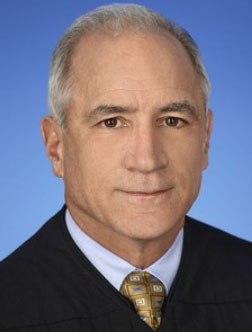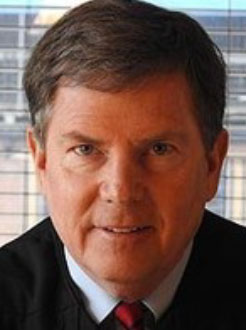Criminal Law
Views From The Bench On Sentencing Representation: Part 11

By Alan Ellis
“Sentencing is a morality play. The defense lawyer is the stage manager and the judge is the audience.” (Lenny Sharon, past president of the Maine Association of Criminal Defense Lawyers).
Before rejoining the Zuckerman Spaeder LLP law firm in Washington, D.C., Judge Mehta worked for the highly acclaimed Public Defender Service in Washington, which was founded by Charles L. Ogletree, now a Harvard Law School professor. Asked what a lawyer can do at a sentencing hearing to make a difference if he’s already provided the court with a quality sentencing memorandum, Judge Mehta says, “Bring passion and candor to the case. Humanize your client. While I don’t know of any judge who takes the bench without an idea of what the sentence is going to be and the sentencing memorandum is vitally important, hearing the lawyer’s words at the hearing definitely can sway me. For example, show me that your client is not necessarily who he or she was at the time of the offense.”

Chief Judge Bredar was formerly the chief federal public defender in Maryland. I have a high opinion of chief federal public defenders. First, they are well and generally favorably known to the judges of the court. Second, they practice federal criminal law 24/7 and are usually quite good at it. Chief Judge Bredar likes sentencing recommendations that are realistic. If you come in too low, you take yourself out of the conversation U.S. District Judge James K. Bredar U.S. District Judge Judge Paula Xinis and lose your credibility on other issues. He commented, “Be realistic. Show me why your recommended sentence is no longer than necessary to achieve the purposes of sentencing.”
Judge Xinis is also a former federal public defender. One of the most gratifying things about interviewing judges who were formerly defense lawyers is that they often know my work in federal sentencing and prison matters. In fact, Judge Xinis told me that, as a practitioner, she often referred to her dogeared copy of my “Federal Prison Guidebook” that sat on her desk.
Judge Xinis is of a mixed opinion when it comes to sentencing recommendations, saying, “They are often useful to have; but on the other hand, sometimes a lawyer should not be wedded to a sentencing recommendation. For example, he or she should listen to where I am coming from in the courtroom. It may be that the recommendation may is too low, but on the other hand, it might be that it’s too high based on what I have heard and said about the defendant in court.”

Sentencing Memorandum
Judge Xinis dislikes cutandpaste jobs when it comes to sentencing memoranda. “There is a disconnect between what is really needed, that is, information about the defendant, and boiler plate citations. It’s far better to tell me why a variance is justified.” She wants a lawyer to start with the offense and the defendant right up front. “I just want to dive into the facts. The good lawyers give me facts tied to the 3553(a) factors. Also, they tell me why a variance is justified. If the guidelines in the case overpunish, tell me why. Tell me about the legislative history or the U.S. Sentencing Commission history behind the guidelines, if it exists. Tell me why a guideline sentence would promote disrespect for the law in the eyes of the community.”
Judge Scola notes that sentencing memoranda are the first opportunity for lawyers to make a positive impression on him. “I am very impressed with lawyers who show legal advocacy in their presentence memorandum on disputed guideline issues. I appreciate lawyers who give me everything I need well in advance of the hearing.” One of his pet peeves is lawyers who do not submit a memorandum or submit them on the eve of sentencing, as well as lawyers who file poorly prepared ones.

He agrees with what I typically do with character letters: Quote from the best ones and attach them as Exhibit A to the sentencing memorandum. Make the rest another exhibit.
Judge Mehta agrees with most other judges that failure to submit a sentencing memorandum is a missed opportunity. “It may be the only time for legal advocacy. Tell me why your client did what he did. Show me that he is not necessarily who he was at the time of the offense. What steps have been taken to rehabilitate him or herself? Show me that he is not going to do it again.” For example, people who have successfully battled substance abuse addiction show Judge Mehta genuine strength of character and that they are less likely to reoffend.
Chief Judge Bredar urges that the sentencing memorandum and letters be submitted as early as possible, particularly in a complex case. “In a complex case, I’ll start my reading weeks before sentencing.”
In Court
I asked each judge what a lawyer can do in court to help his client if he or she has already submitted a topnotch sentencing memorandum. Chief Judge Bredar indicates that he will often engage the lawyers in a conversation. “I’ll have questions for them. A defense lawyer should make a powerful argument on the issues of the case that will cause me to hesitate before imposing a guideline sentence.” Judge Xinis is a selfdescribed “hot” court, telling me, “I like to ask a lot of questions in court. I welcome live character witnesses. I will also ask a character witness to address the defendant directly.”
Judge Xinis also likes live testimony from mental health professionals. “I like to engage them on points in their report that I don’t agree with or have questions about.” She says that lawyers who have put together terrific sentencing memoranda can still significantly add to what the sentence is going to be by what they say in court. “Tell me what sentence would be sufficient but not greater than necessary and why. Tell me why a prison sentence should not be a default sentence.” Judge Mehta also sees value in live testimony, including bringing the mental health experts in so he can question them. Character witnesses are helpful when they speak rather than send a letter. He suggests, “If a lawyer wants to present live testimony, all he need do is notify my chambers several days before.”
Judge Scola gets annoyed with lawyers who don’t prep their client or their character witnesses prior to the hearing, and with lawyers who fail to interrupt their clients who, during allocution, start digging a hole for themselves. Nor does he care much for lawyers who forget that the court is the audience and instead put on a useless show for their client’s family and friends.

At a recent American Bar Association White Collar Bar Institute program in San Diego earlier this year, Judge Charles R. Breyer of the U.S. District Court for the Northern District of California in San Francisco and vice chair of the Sentencing Commission, whom I interviewed for Part 10 of this series, was on a sentencing and prison panel with me. He expressed a similar concern about lawyers who, when they see their client selfdestructing by playing the victim and blaming others during allocution, forget that they can always ask for a recess to talk to their client before proceeding.
Allocution
During allocution, Judge Xinis likes to hear what a defendant’s crime has meant to his family. She also wants to hear what impact it has had on his victim. “The best person to present this information is often the defendant, not his attorney.”
Chief Judge Bredar comes out on the bench with a sense of what he is likely to do. Allocution, however, can change this. He wants to see if a defendant has any insight into the harm he has done. Although “allocution can be tricky,” he thinks it’s a bad move not to have your client allocute. “I am looking for remorse and insight as to why he did what he did and what he is going to do to make sure that it doesn’t happen again. I want to hear what the defendant has done to try to make the victim whole again.”
New Tools
While Judge Mehta has not yet seen a sentencing video, he would like to and thinks they could be provocative in causing a judge to sit up and take notice. “The more information you get in front of a sentencing judge, the better.”
All four judges invite data and statistics on sentences imposed in similar cases. Indeed, I have found more and more cases citing data by the U.S. Sentencing Commission as grounds for reversing sentences. Judge Xinis finds statistical studies helpful. Judge Scola prefers sentencing statistics from his fellow judges in the Southern District of Florida rather than judges in California or New York. He nonetheless welcomes data for similar defendants who have committed similar crimes with similar prior records in the Eleventh Circuit and even nationwide. Judge Mehta also likes statistical data. “Showing me sentences imposed below the guidelines can support a variance in your case.”
At the ABA White Collar Bar Institute program in San Diego, Chief Judge Beryl Howell of the U.S. District Court for the District of Columbia in Washington emphasized that unwarranted sentencing disparity is specifically listed as a sentencing factor in 18 U.S.C. §3553(a)(6): “the need to avoid unwarranted sentence disparities among defendants with similar records who have been found guilty of similar conduct.”
She and Judge Breyer also reminded defense lawyers that they need to connect with the probation officer early on, well before the presentence report is drafted.
Conclusion
Other than the guilty plea or the trial (which only occurs in three percent of all federal criminal cases), the first time most judges learn anything about your client is when they receive the presentence report. It is vital that the defense attorney connect with the probation officer well before that. The prosecution is going to inundate the probation officer with negative information about your client. You need to counteract, or better yet, preempt this as early as possible with positive information about your client. One way can be through a sentencing video, strong character letters and your own facetoface, telephone or written advocacy.
As I often say, if the law is against you, argue the facts. If the facts are against you, argue the law. And if both the law and the facts are against you, take the probation officer to lunch.
Alan Ellis, a past president of the National Association of Criminal Defense Lawyers, is a criminal defense lawyer with offices in San Francisco and New York. He practices in the areas of federal sentencing and prison matters, and was awarded a Fulbright Senior Specialist Award by the U.S. State Department in 2007 to conduct lectures in China on American criminal law and its constitutional protections. He is the coauthor of “Federal Prison Guidebook: Sentencing and Post Conviction Remedies.” The opinions expressed are those of the author(s) and do not necessarily reflect the views of the firm, its clients, or Portfolio Media Inc., or any of its or their respective affiliates. This article is for general information purposes an d is not intended to be and should not be taken as legal advice.
